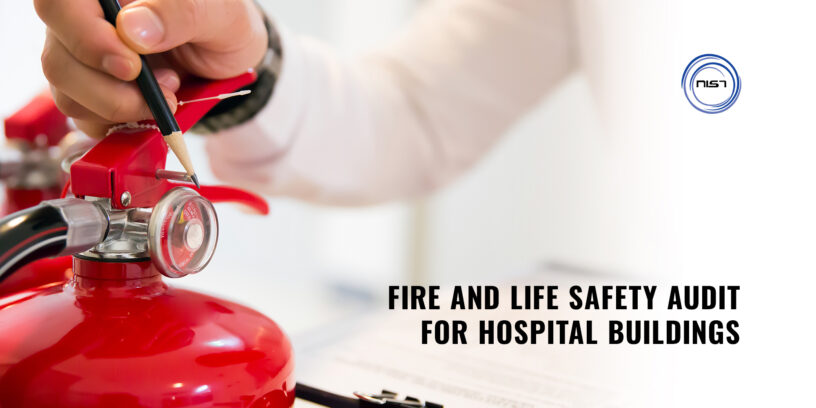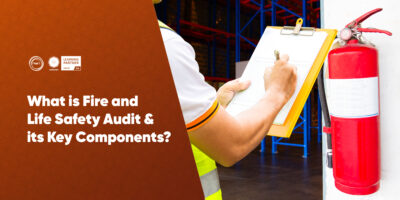Hospitals are places where patients are treated for their injuries or illnesses. However, many accidents have occurred in hospitals due to poor safety conditions. Therefore, hospitals should audit their fire safety plans and educate their staff regarding fire safety. Otherwise, fires can cause severe damage to their facilities and cause injury to their patients.
It’s crucial that hospitals have an effective fire safety system in place to guarantee both patient safety and staff safety. When issues with their fire protection systems arise, many hospitals are put in hazardous situations. According to a 2021 article, “a sudden rise in the number of COVID patients” was one of the causes of fire accidents occurring in hospitals because, despite hospital facilities being able to be expanded right away, electrical wiring systems cannot. This resulted in more fire accidents, which demanded an electrical audit system too. In such situations and emergencies, healthcare providers should immediately seek for an FLSA to prevent accidents before they happen.
A fire and life safety audit assists in avoiding legal problems in addition to saving lives. Doing so prevents fires from happening and reduces injuries among staff and patients as a result. Audit reports should highlight any safety concerns or problems with the current system. After this, changes can be made to ensure that future incidents are prevented and treated quickly.
Most accidents occur when there’s a problem with electrical equipment, including medical equipment like heart monitors or ventilators used by patients with lung problems or respiratory problems like asthma. An electrical issue may start small—like with paper towels that start catching on fire—before growing into an unsafe situation quickly. Staff members will rush into action once they realize there’s an issue with electrical equipment in the building—but they won’t have enough time to find every fault before it causes injuries among staff members or creates additional damage when something sets off an electrical device inside of it. Having a good system in place will help reduce these dangers by treating all potential issues before something serious happens, so catastrophes don’t create additional deaths or injuries among staff members or hospitalized patients alike.
Benefits of FLSA in Hospitals:
Hospitals face many challenges when it comes to fire safety. The first challenge is the difficulty of planning for emergencies while simultaneously running a busy hospital.
Hospitals should consider hiring a recognized firm to audit their fire safety plans. Doing so will ensure that all aspects of hospital security are covered and that they follow a structured plan for dealing with emergencies. This way, they avoid chaos during an emergency and can respond quickly if a fire does occur. Without this plan in place, it’s likely that hospital staff would be working without adequate training during an emergency situation. This would lead to chaos as they responded on their own without knowing what steps to take next. A hospital that creates an efficient emergency plan will significantly increase patient safety and lower the possibility of harm or death in the event of an accident or emergency.
The Fire and Life Safety Audit (FLSA) is intended to identify potential fire and life safety risks and provide a basis for action to eliminate these. The audit provides a systematic, detailed, and thorough inspection of the physical facilities. This ensures that the risk of fire and explosions in the workplace and buildings is reduced. Additionally, the audit also identifies the health and safety procedures in the workplace, the availability of emergency equipment, and the effectiveness of these procedures.
The fire safety audit consists of multiple inspections. The audits are conducted by an auditor and an observer. The audits are split into three main categories: the first is the general inspection of the overall building, the second is the individual inspection of each individual component (i.e., the kitchen, the storage room, the office, etc.); and the third is the on-site visit for the purpose of emergency response.
Why FLSA is needed:
- They are helpful in preventing fire accidents from occurring and in reducing their frequency
- They are valuable for managing and reducing the severity of a fire situation
- They can provide guidelines for the design, construction, and maintenance of a fire safety infrastructure
- They can improve the safety of all patients, staff, and all the hospital’s property
- It is cost-effective in the long run and can reduce the cost of your hospital
- It will make your hospital safer and reduce the risk of a fire happening to your hospital and its staff
- It can save you the loss and also the expense that you incur if a fire occurs
- You will be able to meet and maintain the necessary standards of fire safety
- It can reduce the number of fire injuries and fatalities that your hospital is vulnerable to
Objectives of FLSA:
- Examining the policy statement on fire safety
- Identify, evaluate risk hazards and find out who is at risk from such fire hazards
- Analyze the current preventative measures and make recommendations for any additional preventative actions that may be neede
- Check if a sufficient emergency plan is available, outlining the responsibility and course of action for important personnel
- Examine occupants’ and security personnel’s knowledge of fire safety and rescue procedures.
- Examine whether an appropriate fire alarm and detection system is present. Also, examine whether adequate firefighting resources, such as hydrants, sprinklers, extinguishers, etc., are available
- Analyze the provided passive fire safety measures
- Assess the staff’ and the occupants’ fire safety awareness and instruction
- Evaluate the general awareness of occupants and security personnel on matters relating to fire safety and rescue operations
- Verifying the records of the fire safety training given to employees and residents
- Evaluating the current emergency response plans, fire prevention and protection methods, and risk assessment of fires
It is essential that your hospital’s life is protected and safeguarded by the inspection and assessment of its fire and life safety systems and processes. When a fire occurs, it can spread very fast and become a great risk to your patients and the hospital.
The safety of your hospital’s patients and staff is your prime responsibility, and you can’t afford to leave anything to chance. You must work for their safety. To work for their safety, you must be able to check the safety systems and practices of your hospital to be sure that they are up to standard and have been maintained and inspected regularly.
You must make sure that all the necessary processes and procedures for fire safety are in place and that they are being followed.
Regular audits will help healthcare providers stay on track to maintain safe conditions for all involved during crisis situations within hospitals. Fire safety issues at hospitals require immediate attention as many accidents have occurred due to poor fire safety issues. Hospitals should consider hiring a professional firm like NIST to audit their fire safety plans and make necessary changes before an emergency occurs.













Leave a Reply